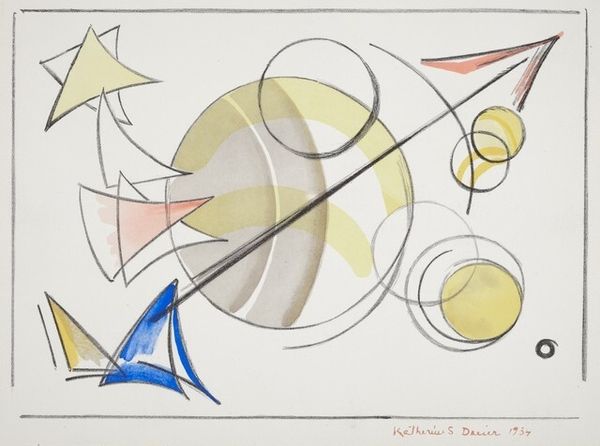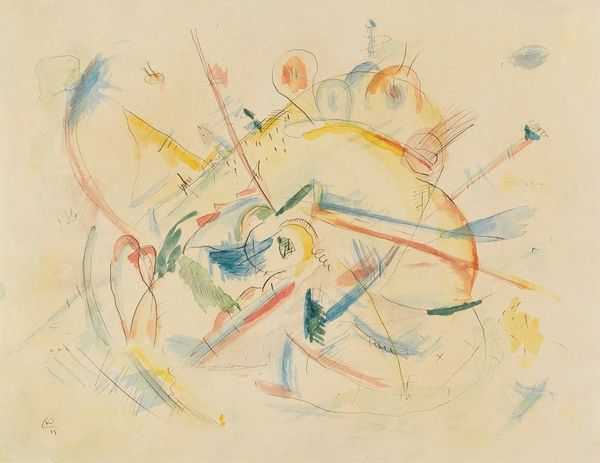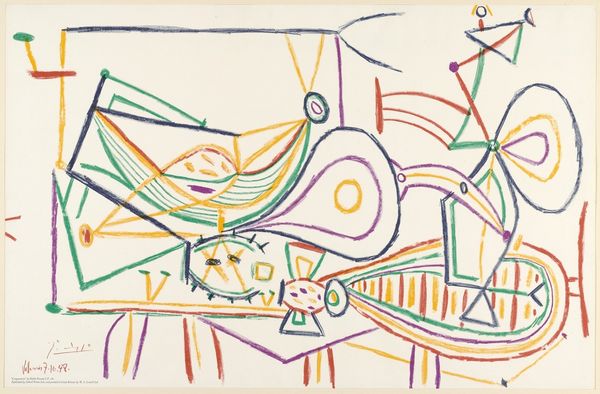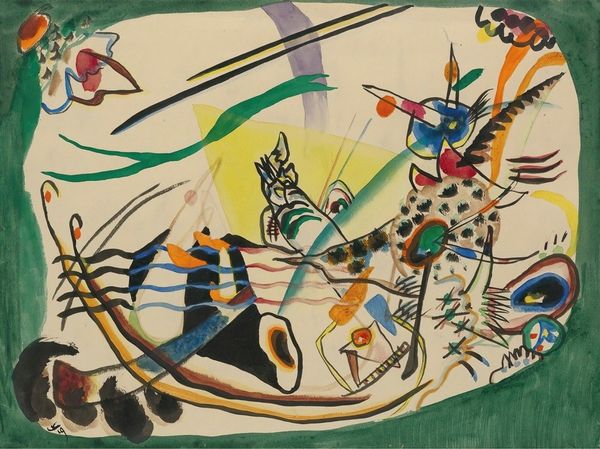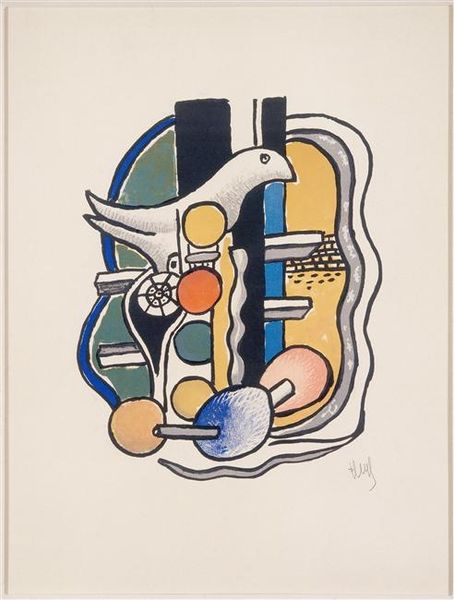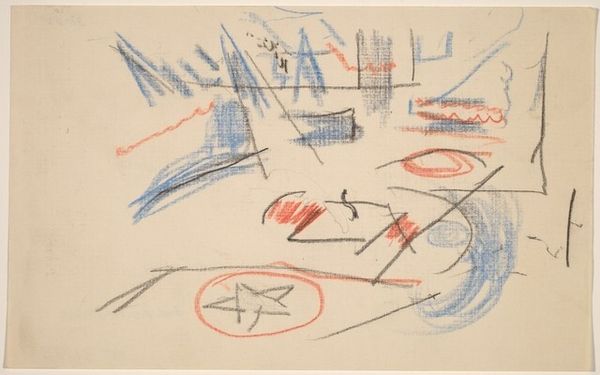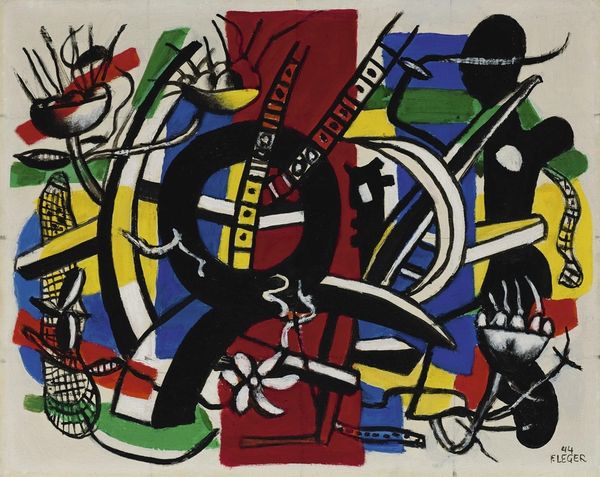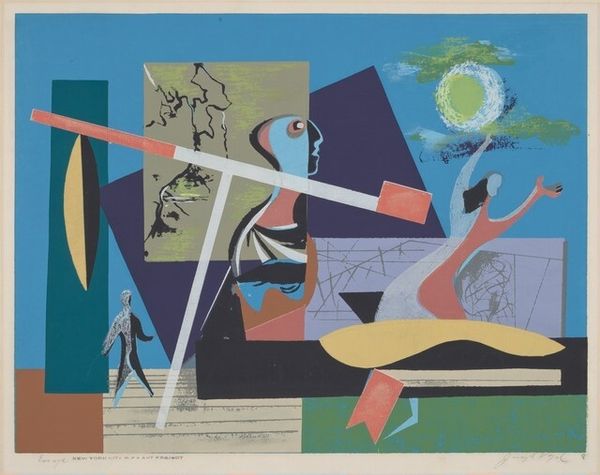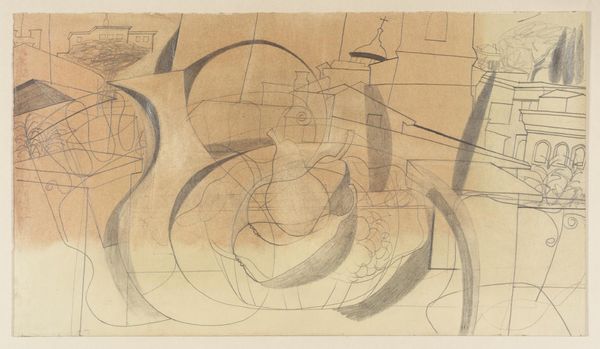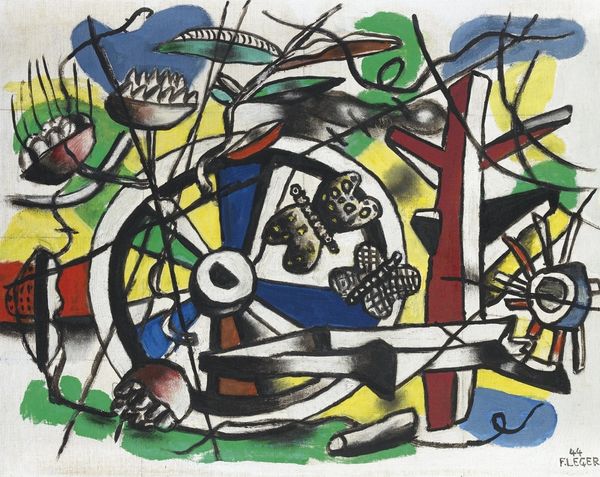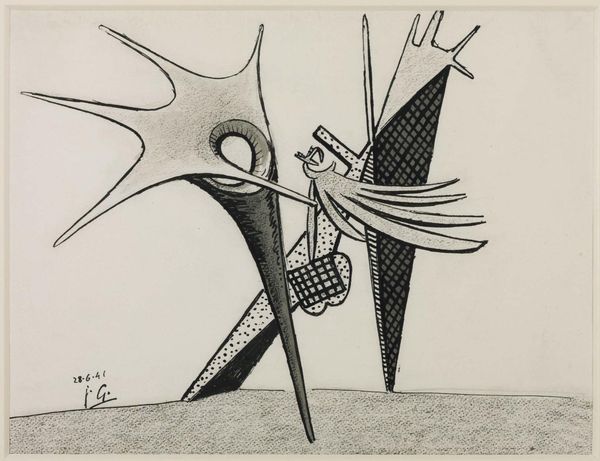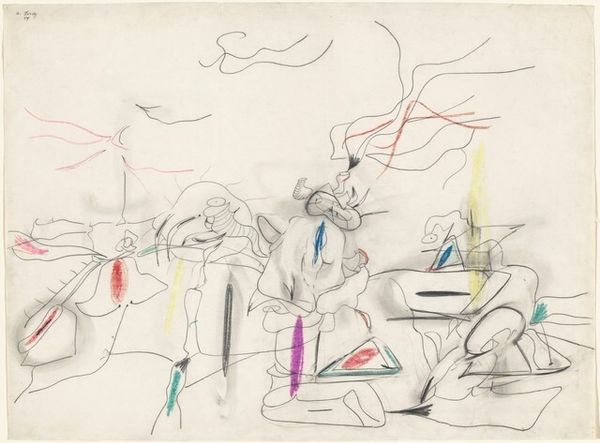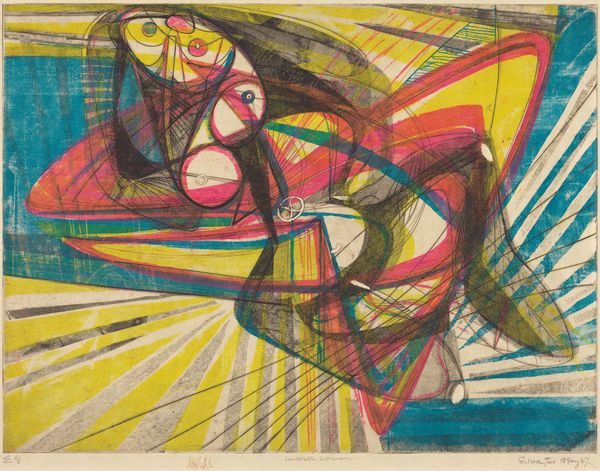
Dimensions: Image: 214 x 302 mm Sheet: 270 x 356 mm
Copyright: National Gallery of Art: CC0 1.0
Curator: Looking at Katherine Sophie Dreier's "Variation 5" from 1937, created using mixed media on paper, primarily ink and watercolor, what are your initial thoughts? Editor: It feels like a blueprint of some joyous machine, all circles and thrusting angles, softened by these gentle watercolors. It's optimistic, almost dizzyingly so, given the year it was made. Curator: Indeed. Dreier, deeply involved with the avant-garde, especially the Société Anonyme, used abstraction to express universal harmonies. Here, the geometric forms aren't cold, but playful. It’s fascinating how her work sits between scientific diagram and personal symbolism. Editor: Exactly. It's controlled chaos. All those lines imply movement, expansion... but the shapes themselves, especially the triangles, are contained. Was Dreier exploring tension between the individual and society, or perhaps internal emotional forces? Curator: One could certainly read it that way. The circles, possibly representing wholeness, are disrupted by those assertive lines and angular forms. Dreier believed abstract art could offer a path to spiritual understanding, rejecting traditional representational modes as inadequate. This resonates with the socio-political context of the time, a search for new visual languages. Editor: So, rather than depicting reality, she's after a new visual vocabulary, reflecting the changing realities and inner lives of people facing modernity? It makes sense that the dynamism also relates to Dreier’s deep interests in music. Rhythm, intervals, the arrangement on the page; these feel like a translation of musical ideas. Curator: Precisely. The work embodies a certain utopianism characteristic of early abstract artists. Editor: Seeing the mix of precision and looseness reminds me that even seemingly cold abstraction is deeply rooted in personal expression. This work now feels less like a diagram and more like a secret map of somebody's soul. Curator: A perfect closing thought on how abstraction holds universal meanings for any curious visitor. Thank you!
Comments
No comments
Be the first to comment and join the conversation on the ultimate creative platform.
